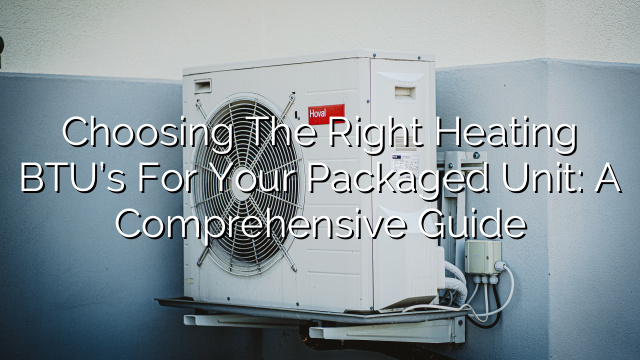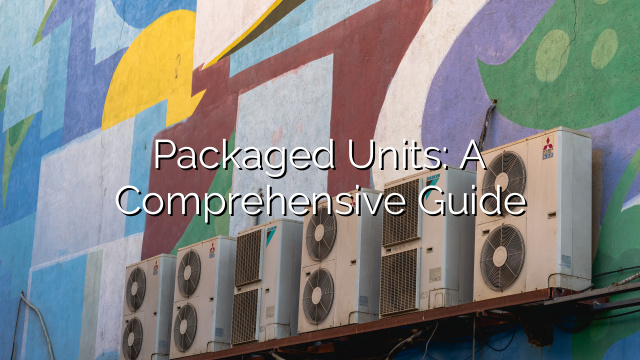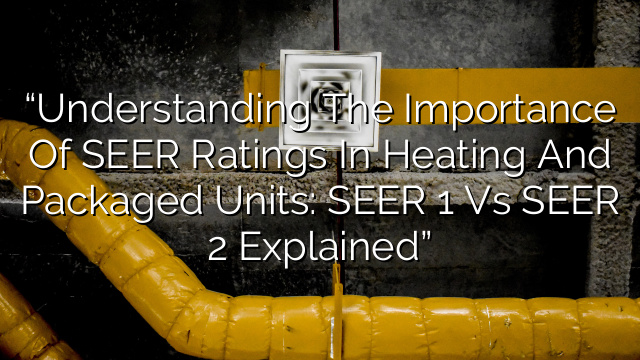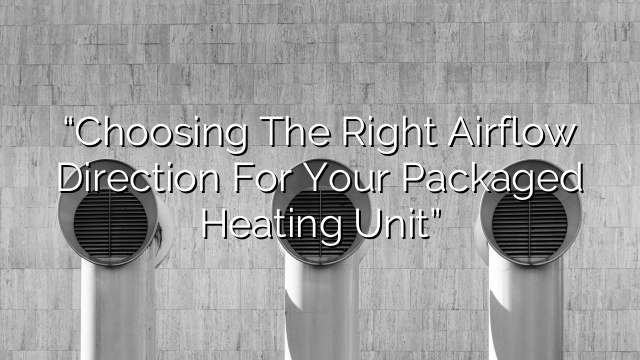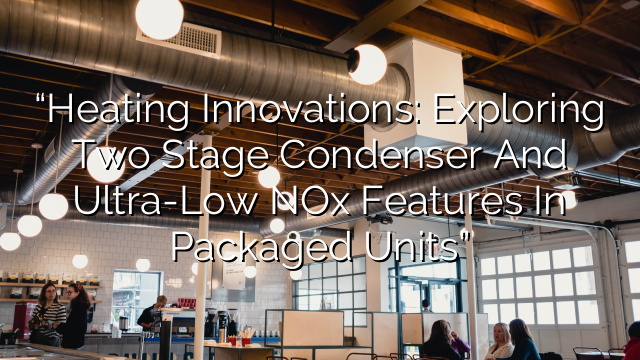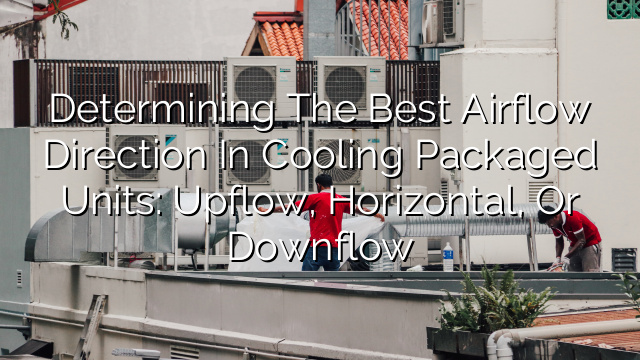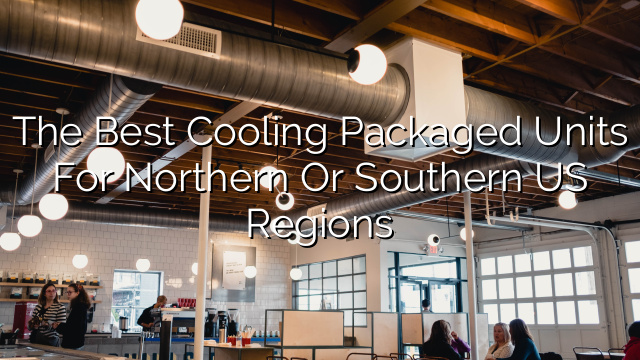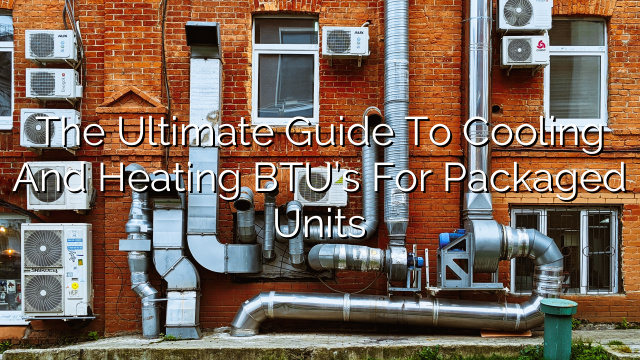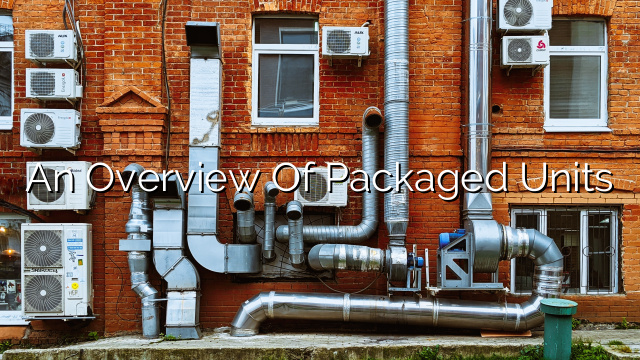Introduction
When it comes to choosing a packaged unit for heating your home or office, one of the most important factors to consider is the heating BTU’s. BTU, or British Thermal Unit, is a unit of measurement used to determine the amount of heat energy needed to raise the temperature of a pound of water by one degree Fahrenheit. Heating BTU’s vary depending on the size of the space you need to heat, so it’s essential to choose the right amount to ensure maximum comfort and energy efficiency. In this guide, we’ll explore the different heating BTU options available and help you choose the right one for your packaged unit.
40,000 BTU’s
A packaged unit with a heating capacity of 40,000 BTU’s is suitable for smaller spaces, such as small apartments or individual rooms, that require minimal heating. It’s important to note that this option may not be sufficient for larger homes or commercial buildings, as it may struggle to maintain a consistent temperature in larger areas.
60,000 BTU’s
If you have a moderately sized home or office space, a packaged unit with a heating capacity of 60,000 BTU’s may be a more appropriate choice. This option offers a bit more power and can adequately heat larger rooms or multiple smaller rooms. It’s important to consider factors like insulation quality and climate when determining if this heating capacity is right for your needs.
80,000 BTU’s
A packaged unit with a heating capacity of 80,000 BTU’s is suitable for larger homes or commercial spaces. This option offers more power and can effectively heat multiple rooms or larger open areas. It’s essential to ensure proper insulation and consider climate conditions to prevent overworking the unit and promote energy efficiency.
100,000 BTU’s
For larger homes or commercial buildings with more extensive heating needs, a packaged unit with a heating capacity of 100,000 BTU’s may be a better choice. This option provides sufficient power to heat larger areas and maintain a comfortable temperature throughout. It’s important to ensure proper installation and regular maintenance to maximize energy efficiency and performance.
120,000 BTU’s
A packaged unit with a heating capacity of 120,000 BTU’s is suitable for commercial settings with significant heating needs, such as warehouses or large retail spaces. This option offers even more power and can effectively heat vast areas. However, it’s crucial to consider factors like insulation and climate to prevent excessive energy consumption and maintain optimal performance.
140,000 BTU’s
For particularly large commercial settings or industrial spaces, a packaged unit with a heating capacity of 140,000 BTU’s is a suitable choice. This option provides ample power to heat expansive areas and can withstand heavy usage. It’s important to work with a professional installer to ensure the unit is properly sized and installed to avoid energy waste and promote efficiency.
150,000 BTU’s
In extreme cold climates or in settings with exceptionally high heating needs, a packaged unit with a heating capacity of 150,000 BTU’s may be necessary. This option offers the most significant power and can effectively heat very large spaces. It’s crucial to work with HVAC professionals to determine if this heating capacity is necessary and to ensure proper installation and maintenance for efficiency and safety.
Choosing the Right Heating BTU’s for Your Packaged Unit
Now that you have a basic understanding of the different heating BTU options available, how do you determine the right one for your packaged unit? Here are some factors to consider:
- Size of the space: Consider the square footage of the area you need to heat. Larger areas will require higher heating BTU’s to maintain a comfortable temperature.
- Insulation quality: Evaluate the insulation quality of your home or office. Well-insulated spaces will retain heat better, allowing you to choose a lower heating BTU rating.
- Climate: Take into account the climate conditions in your region. Colder climates will require higher heating BTU’s to combat extreme temperatures.
- Usage: Consider how the space will be used. High-occupancy areas or spaces that require a consistent temperature, such as data centers, may require higher heating BTU’s.
- Efficiency: Look for packaged units with high energy efficiency ratings, such as ENERGY STAR certified models. These units can provide adequate heating while helping you save on energy costs.
FAQs
Q: Can I choose a higher heating BTU rating than necessary for better performance?
A: It’s generally not recommended to choose a higher heating BTU rating than necessary. Oversized units can result in short cycling, where the unit turns on and off frequently, leading to energy waste and increased wear and tear on the system. It’s best to consult with HVAC professionals to determine the appropriate heating BTU rating for your specific needs.
Q: Are higher heating BTU’s always better?
A: Not necessarily. Choosing higher heating BTU’s than necessary can result in increased energy consumption and higher upfront costs. It’s important to find a balance between heating capacity and energy efficiency to ensure optimal performance and cost-effectiveness.
Q: Can I upgrade the heating BTU’s of my existing packaged unit?
A: In most cases, it’s not possible to upgrade the heating BTU’s of an existing packaged unit. It’s best to consult with HVAC professionals to determine if a replacement unit with a higher heating capacity is necessary for your specific needs.
Q: Are there any additional factors to consider when choosing a heating BTU rating?
A: Yes, it’s also important to consider factors like noise level, maintenance requirements, and warranty coverage when choosing a packaged unit with a specific heating BTU rating. These factors can affect your overall satisfaction and budget in the long run.
Q: Can I use a packaged unit with heating BTU’s for cooling as well?
A: Yes, many packaged units are designed to provide both heating and cooling. However, it’s important to ensure the unit you choose has the appropriate BTU rating for both heating and cooling to maintain optimal performance in all seasons.
Q: How often should I clean or replace the air filters in my packaged unit?
A: Air filters should be checked and cleaned or replaced every one to three months, depending on factors like air quality and usage. Regular maintenance helps ensure proper airflow and efficient operation of your packaged unit.
Q: Can I install a packaged unit myself, or should I hire a professional?
A: It’s strongly recommended to hire a licensed HVAC professional for the installation of a packaged unit. Professional installation ensures proper sizing, correct placement, and optimal performance. Additionally, working with a professional can help you avoid equipment damage, safety hazards, and potential warranty issues.
Q: How often should my packaged unit be serviced?
A: It’s recommended to have your packaged unit serviced at least once a year by a qualified HVAC technician. Regular maintenance helps identify and address any potential issues, ensures optimal performance, and extends the lifespan of your equipment.
Q: Will choosing the right heating BTU’s affect my energy bills?
A: Yes, choosing the right heating BTU’s for your packaged unit can help optimize energy efficiency and reduce energy bills. By selecting a heating capacity that aligns with your specific needs and considering factors like insulation and climate conditions, you can effectively heat your space while minimizing energy consumption and costs.
Q: Are there any rebates or incentives available for choosing energy-efficient packaged units?
A: Yes, there are often rebates and incentives available for choosing energy-efficient HVAC equipment, such as packaged units with high energy efficiency ratings. Check with local utility companies, government programs, and manufacturers to see if any rebates or incentives are available in your area.
Q: How long does a packaged unit typically last?
A: The lifespan of a packaged unit can vary depending on factors like usage, maintenance, and quality of installation. On average, a well-maintained packaged unit can last between 15 to 20 years. Regular maintenance and prompt repairs can help extend the lifespan of your unit.
Q: Can I finance the purchase and installation of a new packaged unit?
A: Yes, many HVAC companies offer financing options to help make the purchase and installation of a new packaged unit more affordable. These options may include low or no-interest financing plans or monthly payment options. It’s important to inquire about financing options when working with an HVAC professional.
Conclusion
Choosing the right heating BTU’s for your packaged unit is crucial for ensuring optimal comfort, energy efficiency, and cost-effectiveness. By considering factors like the size of the space, insulation quality, climate conditions, and usage, you can determine the appropriate heating capacity for your specific needs. Additionally, working with HVAC professionals can help you make informed decisions and ensure proper installation and maintenance of your packaged unit. Remember, a well-sized and properly maintained packaged unit will provide reliable and efficient heating for many years to come.

